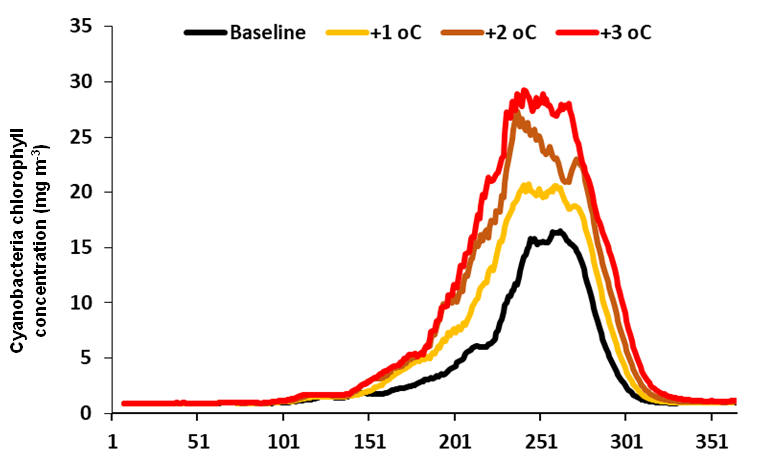Alex Elliott, Lake Ecosystem Modeller at UKCEH, highlights some of his research into the impact of climate change on reservoir water and reflects on his contribution to tackling the water crisis on World Water Day.
World Water Day was initiated by the United Nations in 1993 to “focus on the importance of freshwater”. Ensuring water availability and quality is increasingly more difficult considering the added impacts of climate change. Rising temperatures cause algal bloom which affects water quality, whilst more frequent water-related hazards like droughts increase water scarcity. The UN encourages us to “take action to tackle the global water crisis”. So, my 2024 World Water Day celebration is to share some highlights of the research I’ve been carrying out to support the water industry in overcoming those challenges, preventing future ones, and developing solutions.
As Lake Ecosystem Modeller, my role is to examine various aspects of phytoplankton community assembly, including species succession, the effects of disturbance events, climate change impacts, drought and lake restoration. In order to do that, I’ve used the PROTECH (Phytoplankton RespOnses To Environmental CHange) model for over 25 years. PROTECH simulates the growth of multiple algal species in lakes and reservoirs. Reservoirs are particularly relevant environments to consider climate change impacts as they are used to stabilise water availability. When reservoir water is released, it can modify river water quality and ecology, which makes safeguarding reservoir water quality even more important.
Algal-related water quality problems in reservoirs are often caused by nutrients entering the reservoirs, triggering blooms. These can produce toxins particularly harmful to humans. A possible solution is to use alternative water sources with lower nutrient concentrations. I’ve used the PROTECH model to test this proposed strategy and extended it to evaluate its sustainability as air temperatures rise. My analysis confirmed that using the low-nutrient water sources improved the reservoir water quality, but raising temperatures generated a marked increase in the duration and magnitude of cyanobacteria (also known as blue-green algae) blooms, (see figure below).

When cyanobacteria dominate the phytoplankton biomass, it becomes less edible for zooplankton. This in turn can reduce the amount of food available for organisms at higher levels in the chain, thereby negatively impacting energy flows. Cyanobacteria can also block filters used by the water industry when filamentous forms prevail.
Modelling future scenarios is essential to effectively manage reservoir water. Understanding the risks means mitigations can be tested to develop more effective water treatments or management practices. As new challenges emerge such as extreme drawdown during droughts or changes in dissolved carbon concentrations, I, alongside my fellow scientists, keep developing the PROTECH model to add relevant parameters.
Find out more about our contributions to tackling the water crisis in our recent publication on reservoir water management.
Further reading on my research:
Elliott J. Alex, (2021), “Modelling lake phytoplankton communities: recent applications of the PROTECH model”, Hydrobiologia, 848, 209-217, http://dx.doi.org/10.1007/s10750-020-04248-4
Elliott, J. Alex, (2012), “Is the future blue-green? A review of the current model predictions of how climate change could affect pelagic freshwater cyano.” Water Research, 46, 1364-1371, http://www.sciencedirect.com/science/article/pii/S0043135411007901
J. Alex Elliott, Anthony E. Irish, Colin S. Reynolds, (2010), “Modelling Phytoplankton Dynamics in Fresh Waters: Affirmation of the PROTECH Approach to Simulation,” Freshwater Reviews, 3(1), 75-96, https://doi.org/10.1608/FRJ-3.1.4